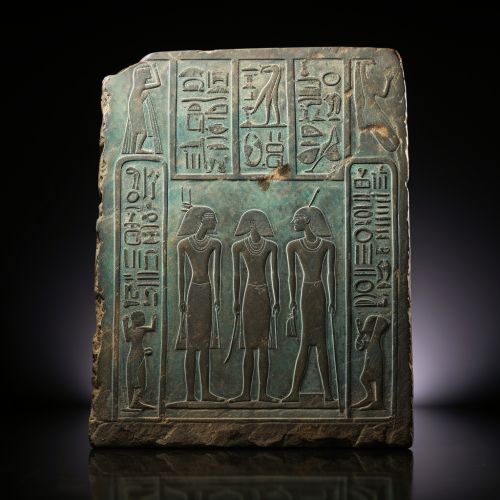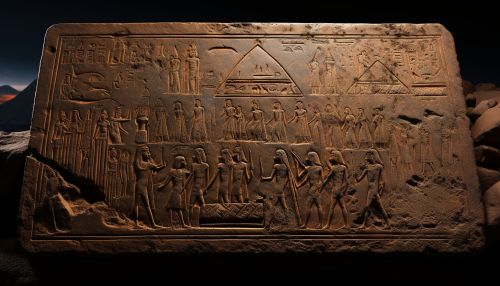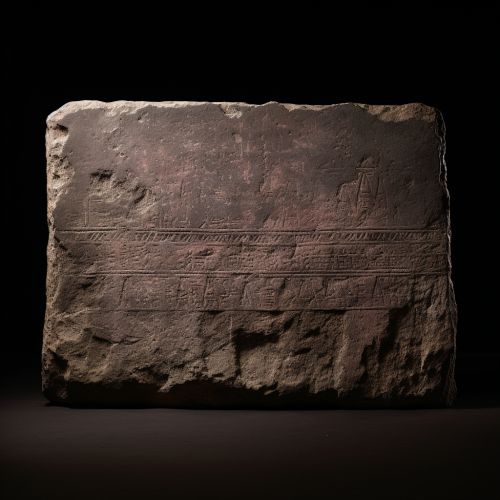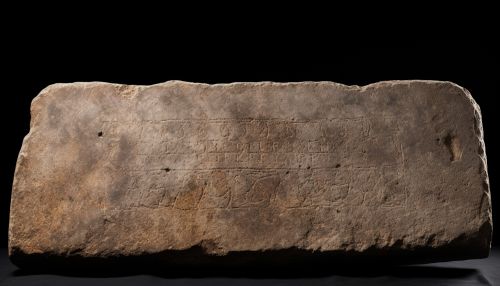Egyptian hieroglyphs
Origins and Development
Egyptian hieroglyphs are an ancient form of writing used by the ancient Egyptians. The term "hieroglyph" comes from the Greek words "hieros" meaning sacred, and "glyphein" meaning to carve or engrave. Hieroglyphs were primarily used for religious and governmental texts, and their use spanned over a period of more than 3,000 years.


The earliest known examples of Egyptian hieroglyphs date back to around 3200 BC, during the Predynastic period. These early hieroglyphs were often inscribed on pottery and ivory tags, and they were used to denote ownership and contents of goods.
The development of hieroglyphs was closely tied to the development of the Egyptian state. As the state grew in complexity, so did the hieroglyphic system. The number of signs used in the writing system expanded from around 700 in the Old Kingdom to over 7,000 in the Ptolemaic period.
Structure and Usage
Egyptian hieroglyphs are a complex system of writing that includes both logographic and alphabetic elements. They can be written in rows or columns, and they can be read from left to right or right to left, depending on the direction in which the characters are facing.
There are three basic types of hieroglyphs: phonograms, logograms, and determinatives. Phonograms represent sounds, logograms represent words, and determinatives are used to clarify the meaning of a word.
Phonograms are the most common type of hieroglyph. They can represent a single consonant, a combination of two or three consonants, or a vowel-consonant combination. The ancient Egyptians did not write vowels, so the pronunciation of many words is unknown.
Logograms are used to represent whole words. They are often followed by a vertical stroke to indicate that they are being used as logograms.
Determinatives are used to clarify the meaning of a word. They do not have a phonetic value, but they provide context for the word they are associated with. For example, the determinative for a god is a seated figure, and it is used after the name of a god to indicate that the word is a deity.
Decipherment
The decipherment of Egyptian hieroglyphs was a long and complex process that spanned over a period of more than a thousand years. The key to deciphering the hieroglyphs was the Rosetta Stone, a stele inscribed with a decree issued at Memphis in 196 BC. The decree appears in three scripts: the upper text is Ancient Egyptian hieroglyphs, the middle portion is Demotic script, and the lowest is Ancient Greek.


The Rosetta Stone was discovered by French soldiers during Napoleon's campaign in Egypt in 1799. It was subsequently studied by several scholars, but the breakthrough in decipherment came from Jean-Francois Champollion, a French scholar and linguist.
Champollion's work on the Rosetta Stone, combined with his knowledge of Coptic, the last phase of the Egyptian language, allowed him to make significant progress in deciphering the hieroglyphs. In 1822, he published his findings, effectively cracking the code of the hieroglyphs and opening up a new world of understanding about ancient Egyptian civilization.
Legacy
The decipherment of Egyptian hieroglyphs has had a profound impact on our understanding of ancient Egyptian culture and civilization. It has allowed scholars to read the texts inscribed on the walls of tombs and temples, providing invaluable insights into the religious beliefs, political systems, and social structures of ancient Egypt.
Despite the complexity of the hieroglyphic system, it has also had a significant influence on the development of other writing systems. The ancient Greeks, for example, adopted and adapted the Egyptian system to create their own alphabet.
Today, the study of Egyptian hieroglyphs continues to be a vibrant field of research, with scholars from around the world contributing to our understanding of this fascinating writing system.
